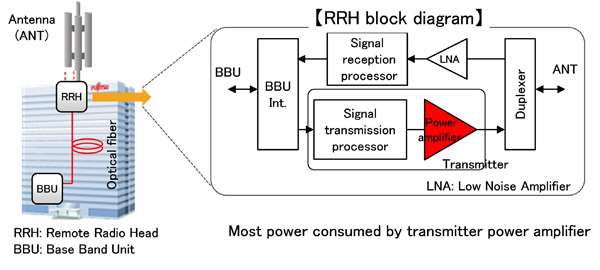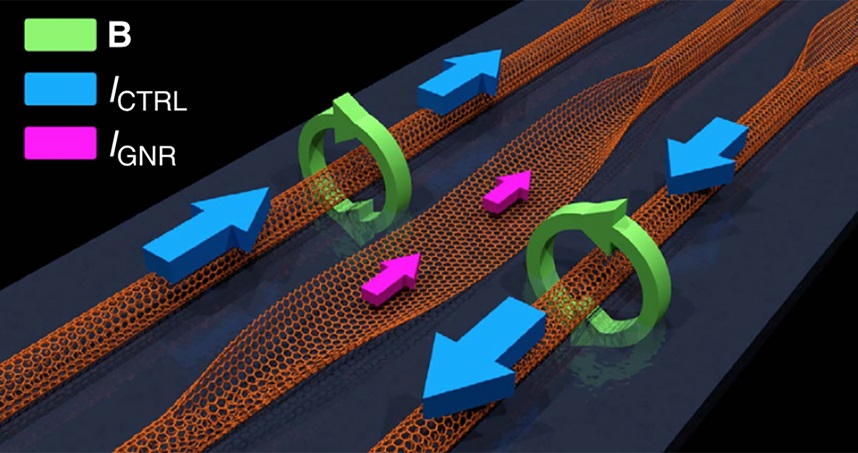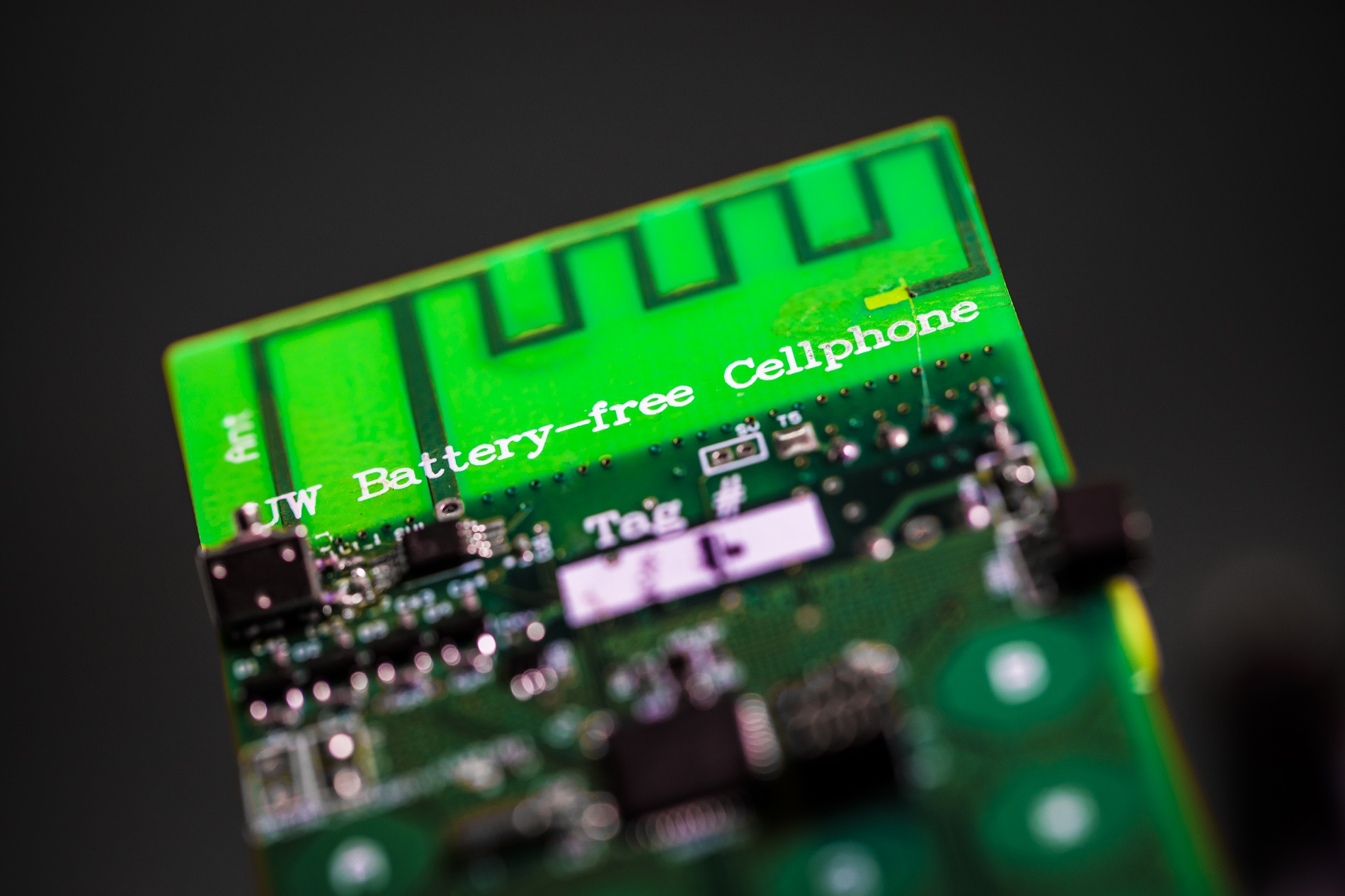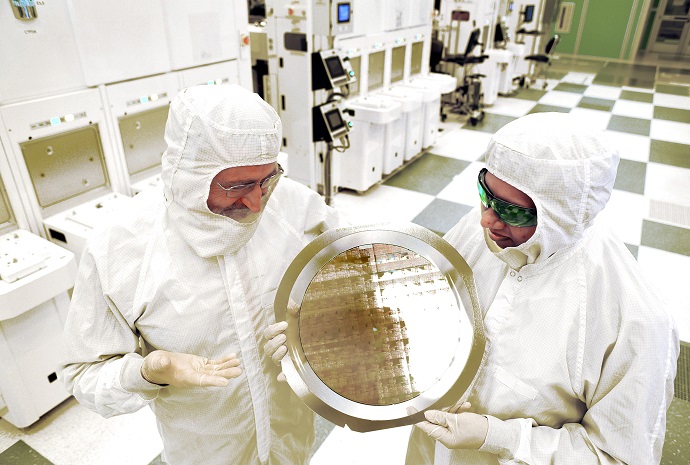Kawasaki, Japan, September 26, 2013 — Fujitsu Laboratories Ltd. today announced the development of circuit technology that enables industry-leading electrical efficiency (the ratio between output power and consumed power) for wireless transmission power amplifiers used in radio-frequency wireless devices, such as mobile phone base stations.
In recent years, due to the widespread adoption of smartphones, there has been a constant rise in the number of mobile phone base stations. These base stations and other radio-frequency wireless equipment typically consume a substantial amount of electricity. Transmitter power amplifiers, which are used to amplify transmission signals, consume a particularly large amount of power, which has led to a need for improved electrical efficiency. By applying outphasing in a transmitter power amplifier, Fujitsu Laboratories has developed a compact, low-loss power combining circuit and a high-precision phase error compensation technology based on digital signal processing. These technologies enable high-efficiency transmissions across more than 95% of the transmission duration, compared with 65% for existing amplifiers. In addition, Fujitsu Laboratories succeeded at developing a prototype transmitter power amplifier with a peak output power of 100 W. This development improved average electrical efficiency during transmission, from the current rate of around 50%, to 70%.
The new technology will help pave the way toward lower energy consumption for mobile phone base stations and other radio-frequency wireless equipment.
Details of the technology will be announced at a monthly Institute of Electronics, Information and Communication Engineers' Technical Group on Microwave Engineering conference, to be held on October 24, 2013 at Tohoku University in Sendai, Japan.
Background
In recent years, the growing prevalence of smartphones, tablets and other mobile devices has led to a constant rise in the number of mobile phone base stations and other radio-frequency wireless equipment that typically consume substantial amounts of electricity. Transmitter power amplifiers, which are circuitry employed to amplify transmission signals, consume a particularly large volume of electricity. Accordingly, decreasing the power consumption of transmitter power amplifiers would greatly help to reduce the power consumption of wireless equipment as a whole, a goal that has gained momentum as a way of reducing the technology's environmental footprint.
Technological Issues
The electrical efficiency of a transmitter power amplifier typically varies in proportion to output amplitude, making it difficult to achieve high electrical efficiency with high dynamic range output power. For example, with transmitter power amplifiers used in today's mobile phone base stations, efficient high power output was limited to about 65% of all transmitting durations.
Fujitsu Laboratories has explored the use of outphasing to increase electrical efficiency over a high dynamic range output power. In this method, a transmission signal is first split into two signals with the constant amplitude and opposite phase variations. The amplitude of the signal is set for the amplifier device to work with high conversion efficiency. These signals are amplified by each amplifier device, and then combined via vector synthesis using a power combining circuit to reconstitute the source signal wave form(Figure 2). However, electricity loss in the combining circuit and the high-level of precision required in terms of phase difference when reconstituting the source signal had prevented this technique from being used in radio-frequency wireless communications applications.
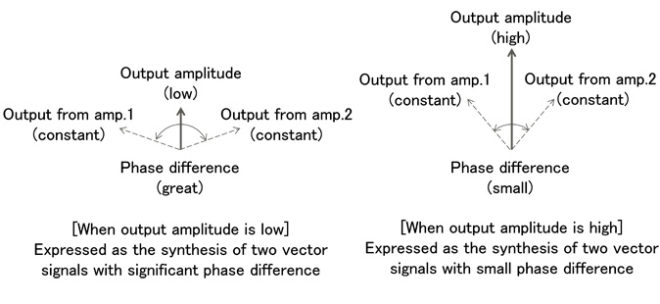
Figure 2: How Outphasing Works
Newly Developed Technology
The application of outphasing in a transmission power amplifier has led Fujitsu Laboratories to develop a compact, low-loss power combining circuit and a high-precision phase error compensation technology based on digital signal processing. These technologies enable high-efficiency transmissions across more than 95% of the transmission duration, compared with 65% for existing amplifiers. In addition, Fujitsu Laboratories succeeded at developing a prototype transmitter power amplifier with a peak output power of 100 W. As a result, the development enabled an improvement from the current rate of around 50% electrical efficiency, to 70%, during transmission. Key features of the technology are as follows.
1. Compact, low-loss power combining circuit
By accurately analyzing the relationship between output load impedance and electrical efficiency when simultaneously running two amplifier devices, Fujitsu Laboratories developed a power combining circuit with a shorter circuit path. The shorter circuit path reduces loss in the power combining circuit and broadens its frequency bandwidth.
2. High-precision phase error compensation technology based on digital signal processing
The input-side signal splitting is handled by a digital signal processor, and the output error from the power combining circuit is detected and fed back into the digital signal processor, thereby making it possible to accurately reconstitute the signal while precisely compensating for phase deviation.
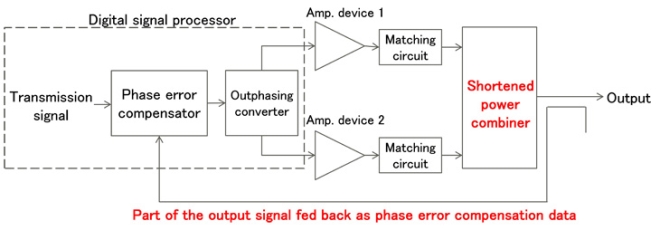
Figure 3: Diagram of New Outphasing Method
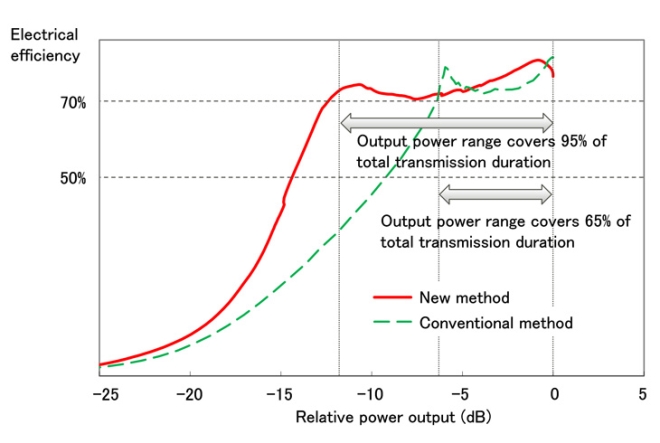
Figure 4: Electrical Efficiency Comparison between Conventional and New Methods
Results
The new technology will make it possible to reduce the power consumption of radio-frequency wireless equipment, such as mobile phone base stations. If deployed, for instance, in 60,000 remote radio heads in the wireless components of mobile phone base stations, an annual reduction of 2,650 tons of CO2 emissions could be expected.
Future Plans
Going forward, Fujitsu Laboratories will work to expand the range of frequencies and output power levels supported by the technology in order to increase its performance to where it can be used in actual wireless systems. In moving forward with development that will enable it to meet the requirements of mobile phone base stations and other wireless equipment, Fujitsu aims to commercialize the technology in 2015.
About Fujitsu
Fujitsu is the leading Japanese information and communication technology (ICT) company offering a full range of technology products, solutions and services. Approximately 170,000 Fujitsu people support customers in more than 100 countries. We use our experience and the power of ICT to shape the future of society with our customers. Fujitsu Limited (TSE: 6702) reported consolidated revenues of 4.4 trillion yen (US$47 billion) for the fiscal year ended March 31, 2013. For more information, please see http://www.fujitsu.com.
About Fujitsu Laboratories
Founded in 1968 as a wholly owned subsidiary of Fujitsu Limited, Fujitsu Laboratories Limited is one of the premier research centers in the world. With a global network of laboratories in Japan, China, the United States and Europe, the organization conducts a wide range of basic and applied research in the areas of Next-generation Services, Computer Servers, Networks, Electronic Devices and Advanced Materials. For more information, please see: http://jp.fujitsu.com/labs/en.

